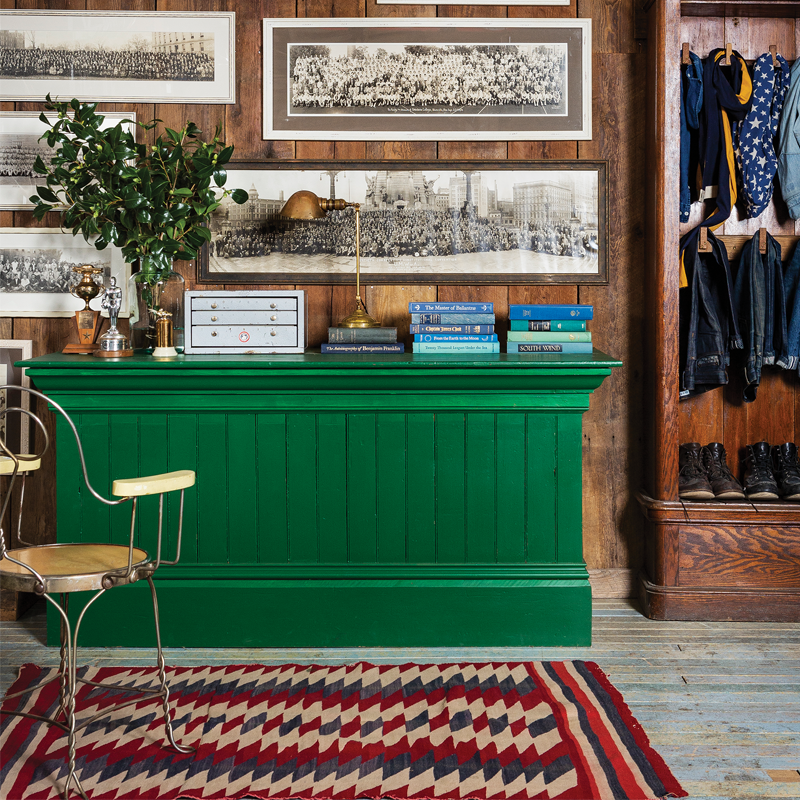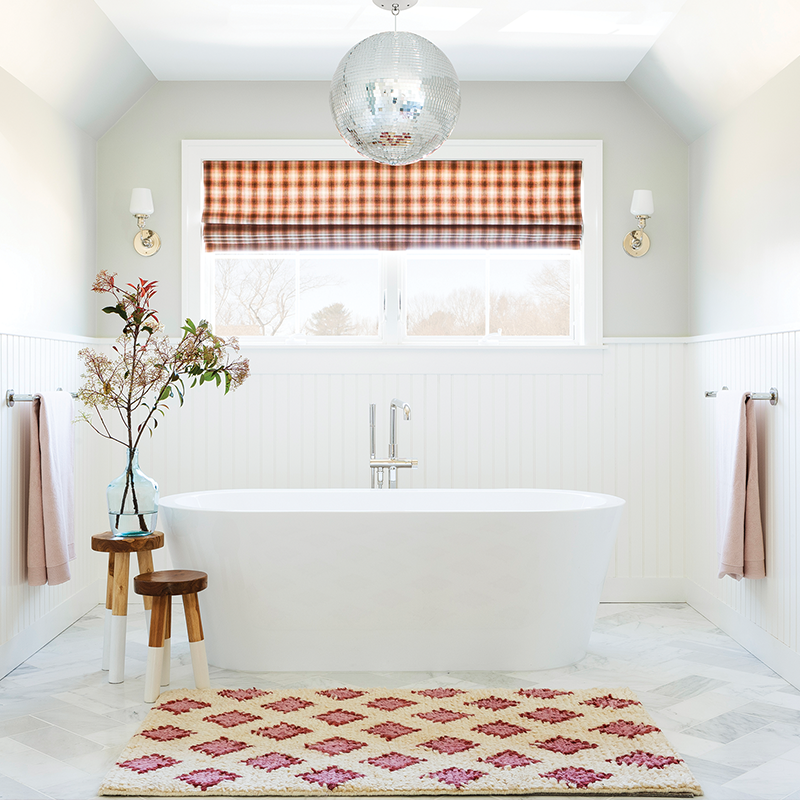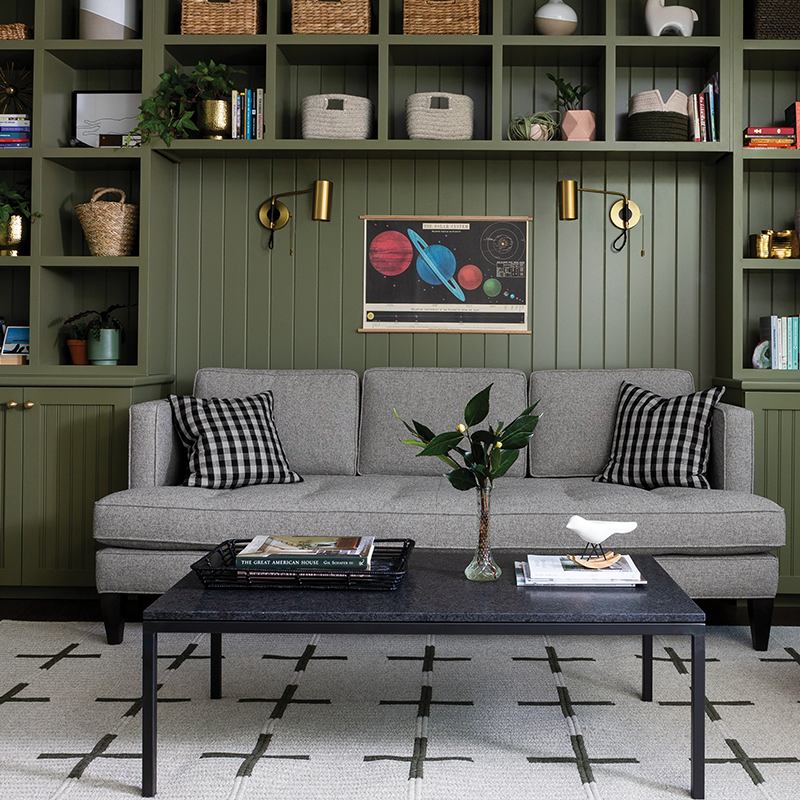Our family has a tradition of touring the rugged Oregon coast in winter. We love exploring the small, charming towns when tourism is low and the Pacific Ocean frothy and wild. During our last adventure, we fortuitously stumbled into Wanda’s Cafe + Bakery in Nehalem. It was the perfect spot to escape the blustery rain and omnipresent chill.
After a sublime breakfast and numerous cups of coffee, we stalked the baked goods near the check out. A sucker for books, I couldn't help but notice a few volumes across from the register. In particular, a red and black book titled “Lodge” drew my eye. I recognized the author Max Humphrey from his numerous collaborations with a-list home goods brands. I scanned a few pages and was hooked.
“Lodge” is a love letter to ten of America’s iconic national parks. Even if you’ve never visited any of the lodges, there’s an instant emotional recognition of the building styles, furniture, textiles, and colors. It’s a shot of pure Americana and the overarching vibe of the design schemes fit hand in glove with Max’s visual language.
Max’s work has a cinematic quality akin to Wes Anderson. Once you’ve seen it, you recognize it instantly, whether the form is wallpaper, or a luxury residence. There’s a nod to the past, but at the same time everything feels fresh. Underneath the design is a welcoming pull that invites you to drink it all in, like an ice-cold soda in summer.
Rug Insider reached out to Max to learn more about his creative inspiration and process for designing spaces and products.
“I never really stop to think about why I like the things I like. I do know that I never have to think twice about a rug, in particular. I know from the second I see it, and if I love it, I know it’ll work in the space.“ MAX HUMPHREY
RI: You jumped from being a musician in a touring rock band to the field of interior design. What sparked your interest in design work?
“I had just come off a couple of years of being on the road with my band and was back in LA in an unfurnished apartment, and while I was supposed to be looking for a real job, I was spending all of my time decorating my new apartment. A couple of months into this, I realized that I was more excited about paint colors and fabrics and arranging artwork and experimenting with furniture plans than I was with anything else, so I decided that was my next career move.”

Max favors kilims with tribal and geometric motifs to anchor spaces. Photography by: Christopher Dibble
RI: What advice would you offer to someone who’s starting a career in interior design?
“When I first got into it, there was less of an interior design presence online, and I spent all my time early on looking through old issues of Architectural Digest and Domino and reading design coffee table books at Barnes & Noble. It was about having something tangible in front of me that helped me stay focused rather than endless scrolling. So, my advice would be to hit the books.”
RI: You’ve often referenced nostalgia as the inspiration that fuels your work. What are some of the touchstones from the past that guide your vision?
“I grew up in a small town in New England, and everything I do now goes back to my childhood home, which was full of gingham and buffalo check and vintage treasures my parents collected on trips around Vermont and New Hampshire. Then the other touchstone is—when in doubt, what would Ralph Lauren do (WWRLD)?”
RI: Your visual aesthetic and Old Hickory furniture are a natural complement. How did that collaboration come to fruition?
“I wrote a book called Lodge, an Indoor Tour of America’s National Parks, where I traveled to 10 of the most notable, historic lodges, and the common theme at each lodge was Old Hickory furniture in the lobby. So, naturally, I photographed and wrote about Old Hickory in the book, and through that, the Old Hickory people reached out and asked about collaborating on a Lodge-themed collection.”
RI: You’ve collaborated with Sunbrella on fabric, wallpaper with Chasing Paper, window treatments with Hartmann & Forbes, mats with House of Noa, rugs with Thayer Design Studio, and now furniture with the aforementioned Old Hickory. That’s quite a list! Is there another category of design that you’d like to develop into a collection?
“I always struggle with finding the perfect light fixture on a project, and all of the products in my collections are designed to fill a gap in what I’m looking for. So, lighting would be a fun one to add to the mix.”
RI: Is there a new Max Humphrey collection coming down the pipe that you’d care to tease?
“By the time you read this, my second fabric collection with Sunbrella will have launched, as well as a line of enamelware with Crow Canyon! Both were inspired by the American West.”
RI: When you're starting a new collection, how do you think about color?
“If I ever get stuck on color, I look in my closet, which is all flannel shirts and blue jeans. Most of my design collaboration palettes follow those same rules.”
RI: In your first book, “Modern Americana,” there’s a photograph of a disco ball hanging over a bathtub. Apparently, the contractor wouldn’t install a chandelier over the tub. The result is a unique and jaunty space. Could you share a couple more examples of limitations that have sparked inspiration?
“I typically don’t like a blank slate; I can always be more creative when there are walls I have to climb over. Whether it’s trying to fit in every request a client has, or a challenging floor plan, or a crazy deadline, it’s what keeps things interesting.”

Due to building code restrictions, a disco ball takes the place of a traditional chandelier. Photography by: Christopher Dibble
RI: When engaging in a new project, when do you begin thinking about area rugs?
“Rug selections are always first or last for me, never in the middle. I’m either finding a great rug and designing a room around it or designing a room and then hunting for the perfect rug to tie everything together.”

A braided Cross rug designed by Max Humphrey and produced by Thayer Design Studio. Photography by: Christopher Dibble
RI: Navajo designs, kilims, and Berber rugs feature prominently in your work. What do you love about these styles?
“I never really stop to think about why I like the things I like. I do know that I never have to think twice about a rug, in particular. I know from the second I see it, and if I love it, I know it’ll work in the space. I think rugs in particular are something that can stand alone and don’t necessarily have to match style-wise or color-wise with the furnishings or the architecture of the home.”
RI: What projects have afforded you the most creative freedom?
“My product collaborations are where I have been able to express my creativity the most because I design everything around what I would want to use. With client projects, there’s always compromise, and at the end of the day, I don’t have to live in these homes; my clients do.”
RI: Is there a public space that you’re dying to redesign?
“I’d love to design a public library both because I believe in them as an institution, but also because I love arranging bookshelves, and I think about the opportunities.”
RI: You’ve said that “All my design work is fueled by coffee.” As a fellow dweller of the Pacific Northwest, I’d be remiss if I didn’t ask for your favorite coffee spot.
“My favorite spot is making it at home, using my own beans from Lodge coffee, which I developed in partnership with Coava, one of Portland’s finest roasters.”
